
The best online fitness resource you'll ever need. We filter out the BS to ensure you meet your health and fitness goals!

The best online fitness resource you'll ever need. We filter out the BS to ensure you meet your health and fitness goals!
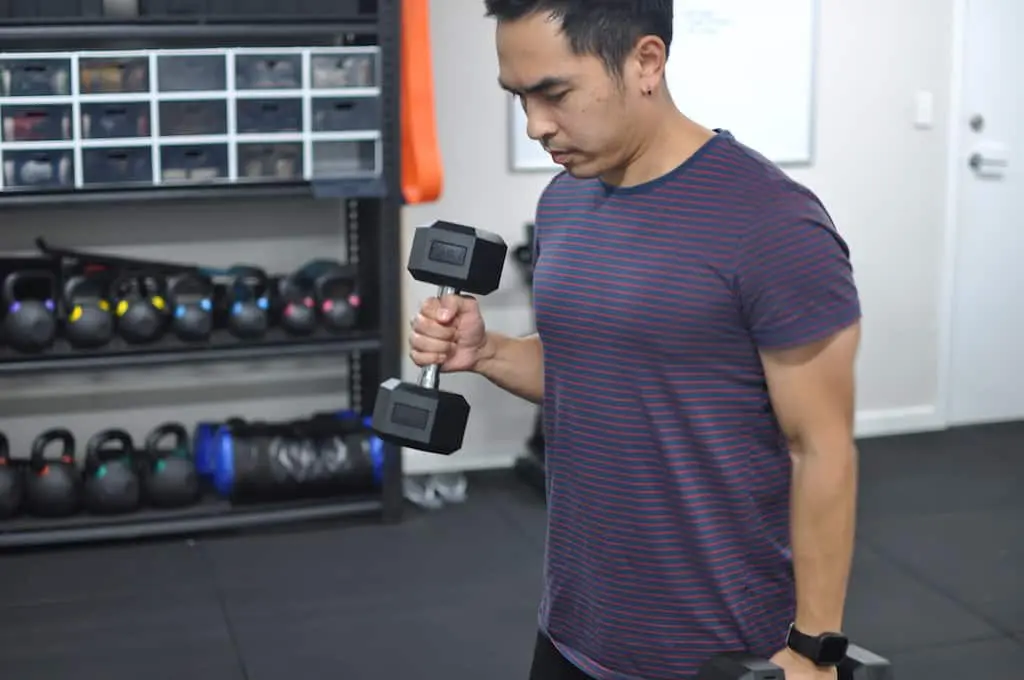
The 1 1 2 hammer curl is a variation of the traditional hammer curl which simply enables an extended set of the movement to be performed. It is often used with a dumbbell, however, a cable machine could also be used because the arms must work independently in order to complete the 1 1 2 rep pattern.
One entire “rep” is composed of each arm performing a hammer curl followed by both arms doing a simultaneous hammer curl. A 1 1 2 hammer curl would look like this:
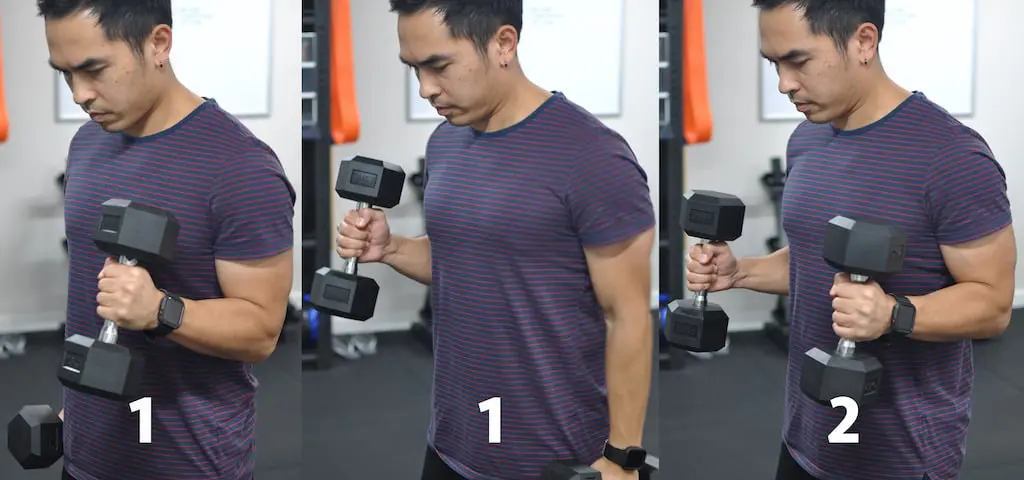
We’ll cover the ways to “repeat” below in our How to section.
As you can see, the 1 1 2 hammer curl is more a rep structure than it is a modification of basic hammer curl form.
1 1 2 hammer curls work the biceps brachii–both short and long heads, the brachialis, and the brachioradialis dynamically, and the forearm muscles are intensely worked isometrically due to the extended length of a set of 1 1 2s.
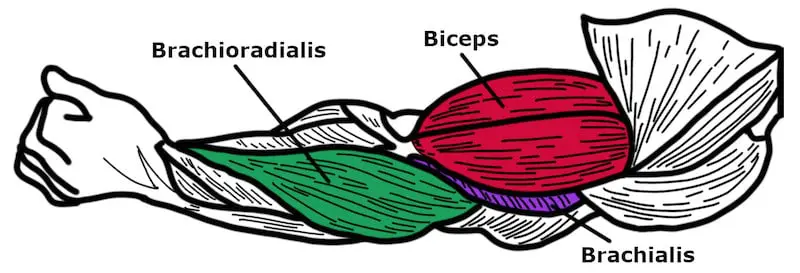
The aim of the 1 1 2 hammer curl is muscle fatigue and sets done to volitional failure as a means of overload, which in turn is intended to spur muscle growth.
Volitional failure is the inability to perform another rep at all, whereas “technical failure” is the inability to perform another rep correctly. You should never perform exercises to technical failure as injury can occur in that zone.
So, because 1 1 2 hammer curls work to volitional failure, the smaller muscles are going to fatigue first assuming all other things are equal.
Assuming that’s true, you can expect 1 1 2 hammer curls to intensely work the muscles of the forearms and the brachio-radialis.
Again, the forearms are being loaded isometrically, which is not as renowned for building mass as dynamic loading, which the brachio-radialis experiences.
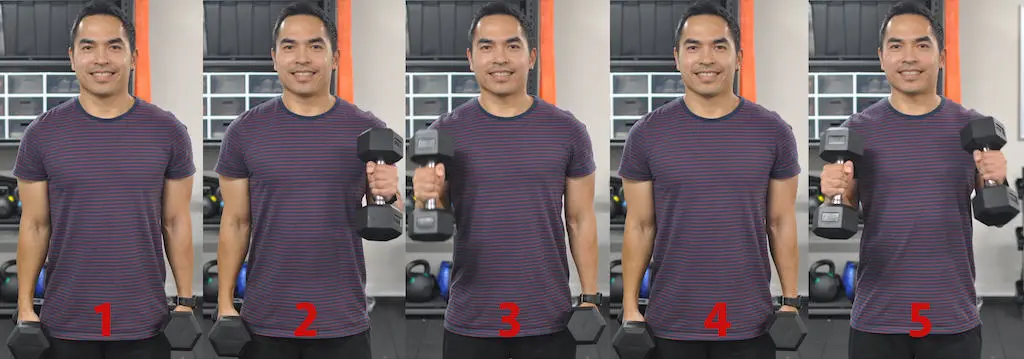
Proper form is always important and when an exercise is designed for the express purpose of generating fatigue, attention to proper form becomes especially important.
Here’s how to do a set of 1 1 2 hammer curls properly:
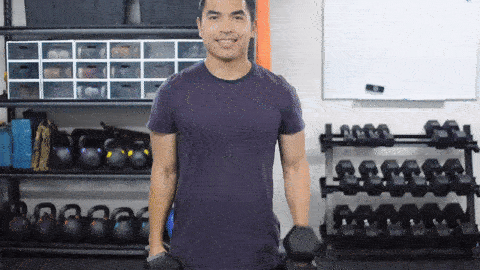
The 1 1 2 hammer curl is subject to the same mistakes common to other hammer curl variations and will be subject to fatigue-related errors simply due to the exercise’s design.
Cheating takes several forms like letting your grip fail. Here are two types of hammer curl grip failure:
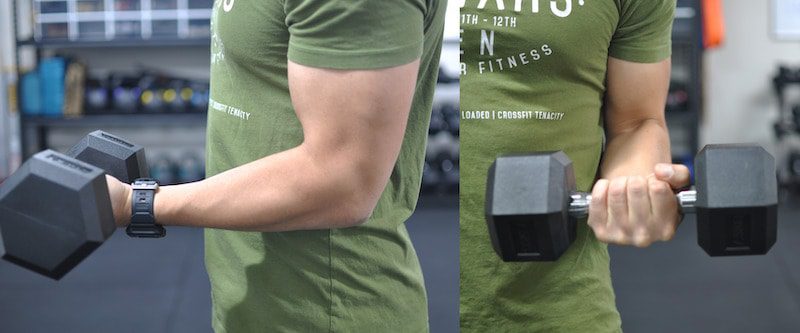
Palms-up grips turn a hammer curl into something else. It might be a good biceps exercise, but it wouldn’t be a hammer curl. We need to maintain discipline in terminology if we hope to communicate exercise education and programming.
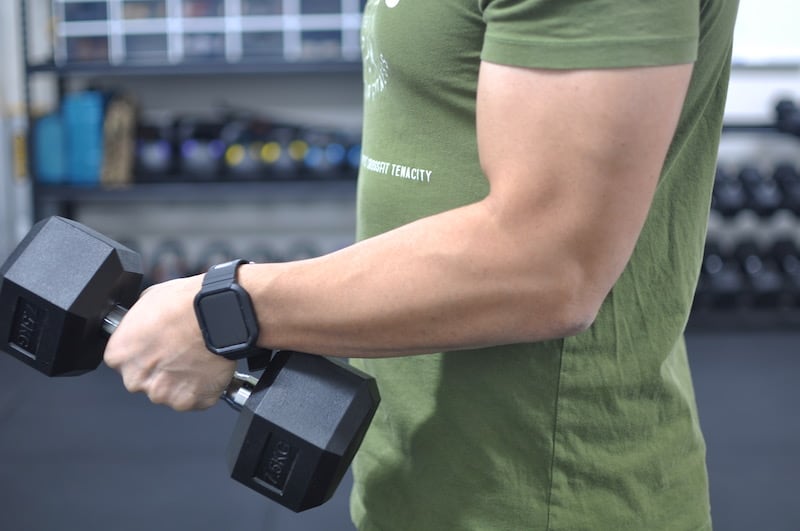
Letting your thumb side fall forward and down is adducting the wrist. The movement should resemble its namesake, hammering.
You should be able to set a ruler flat along the back side of your forearm up to your knuckles with no gaps. The thumb should stay “high”.
If you couldn’t throw a punch with the same grip you use for hammer curls, you don’t have a proper hammer curl grip.
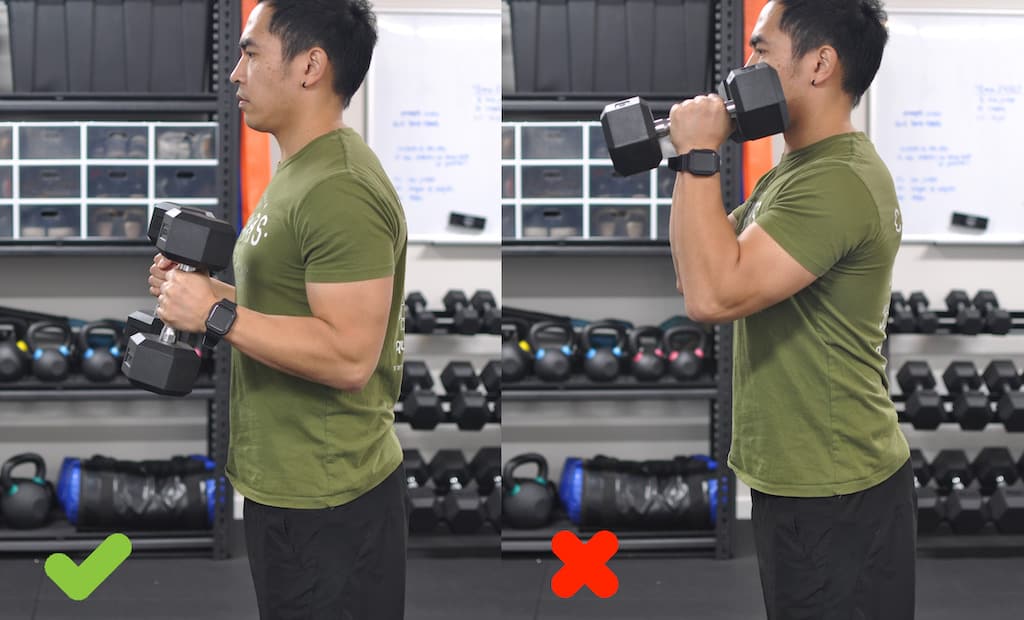
The one and only thing that should be moving is the forearm. The elbow should remain tucked in at the sides at the same position throughout the entire movement and act simply as a hinge.
If the forearms are moving forward or backward at any point, the curl becomes easier because your whole arm, not just your forearm, is doing the work. That means there will be lesser pain and therefore lesser gain.
If the only way those dumbbells are going the be curled up successfully is by moving the elbow, then you’re going too heavy – drop down in weight until proper elbow positioning can be achieved for the full range of motion.
Related to the point above, the target muscles must lower the weight all the way to the bottom of the range where the weight is at the side.
Keeping arms bent while bending forward and backward at the waist is not a curl of any sort. Yet we see this all the time in the gym among novice lifters.
If your objective is to build your arms, you’ve got to actually move the arms.
Doing a funky Good Morning variation in the name of hammer curls won’t do a thing for your arms, or your reputation in the gym.
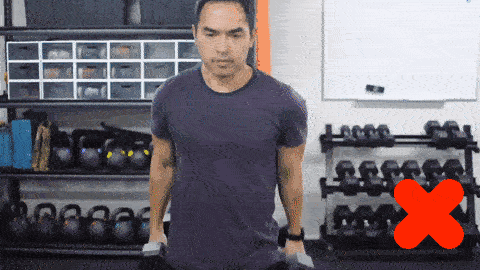
Winding up to initiate the curl turns this exercise into “cheat curls”. There’s a place for cheat curls (at least, I’ve heard there was). To get the arm-building benefits of the 1 1 2 hammer curl, you’re better off using only your biceps and companion anterior upper arm muscles only.
The 1 1 2 hammer curl’s chief benefit is that it “tricks” the lifter into doing a very high rep set without it seeming like a high rep set. An 8-rep set of 1 1 2 hammer curls is actually 24 reps (3 individual hammer curls per 1 1 2 “rep”.)
Before you know it, you’ve done a lot of arm work. If you maintain good form through the entire set, you can get a really good workout in a relatively short period of time.
The biceps are roughly 60% Type IIA (fast twitch) muscle fiber, meaning that about half are the slower twitch Type IA fibers known for endurance. That’s over-simplified but directionally-correct.
Longer sets that create a lactic acid burn like 1 1 2 hammer curls do will be better suited to building Type IA fibers.
Programming for physique should balance exercises and set-rep combinations that work both Types I and II muscle.